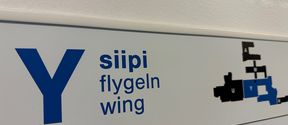Getting familiar with ground properties in field exercises of Geoengineering
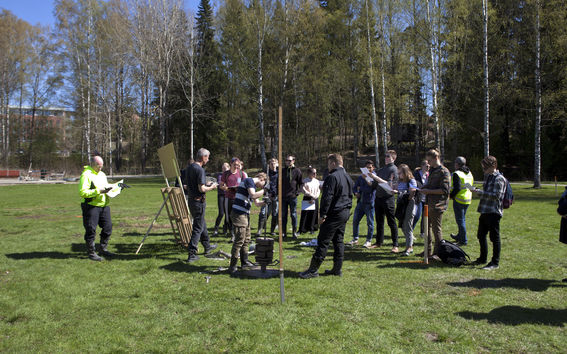
During the day, approximately 200 students in small groups familiarised themselves with the equipment and completed related exercises in the Ossinlampi environment and in the forest nearby. The students represented two courses: Geology and geomechanics and Geoengineering and georesources.
‘According to the soil map, we are now in the blue zone, which means that the soil is claye and quite poorly suited for construction’, says University Teacher Henry Gustavsson. ‘Below us, we have soft clay with a thickness of 3,5 to 15 metres. The clay is so soft that the buildings have to be constructed on piles.’
The quality of the soil is tested with a weight sounding test. Taneli Helminen, a student majoring in Energy and Environmental Technology, does not hesitate to grab the device for weight sounding.
‘The weight sounding rod’s sharpened, carrot-like tip penetrates vertically into the ground. Weights are added, and the aim is to make the rod sink at the speed of 2–5 cm / second. If the speed is too fast, we reduce weight. If it's too slow, we add weight. Everything is recorded’, Gustavsson teaches.
Weight sounding is not always that light. Two students are needed to get the work started. Soon soft clay seeps out of the borehole. It feels strange under the feet, but according to the teacher, there is no reason for concern,
‘There is a proper dry crust here, which can even support a vehicle. Closer to the seaside, the constuctability category is 6, meaning that construction is extremely difficult. However, expensive land and the seaside make people build in such areas, too’, says Gustavsson.
Helminen, who is interested in water and environmental technology, says that also geotechnics have started to interest him during the field course.
‘I have not yet decided the programme for my master's degree, but I am becoming interested in sectors connected with the environment. They are the sectors of the future’, he thinks.
Next, the group moves to an area very suitable for construction and belonging to constructability category 2. In such areas, it is possible to use ground supported foundations, as the soft soil layer on top of the dense, coarse grained soil layers is no more than three metres in thickness.
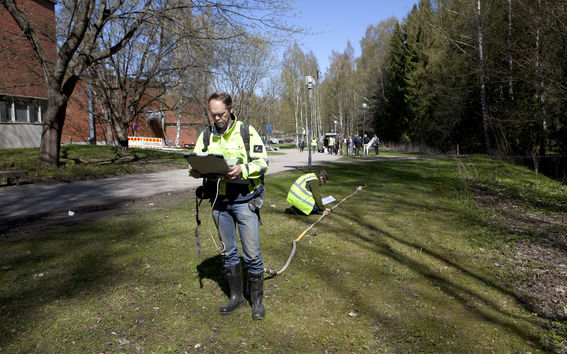
Assistance for using the ground penetrating radar was provided by DSc (Tech) Tero Hokkanen, with a doctoral degree in geophysics from Aalto University.
The undergraduate course YYT-C2003 open to all was carried out in spring with the assistance of Ramboll soil investigation machines. It took place in the backyard of the building of Civil and Structural Engineering, in the Ossinlampi environment and in the forest nearby.
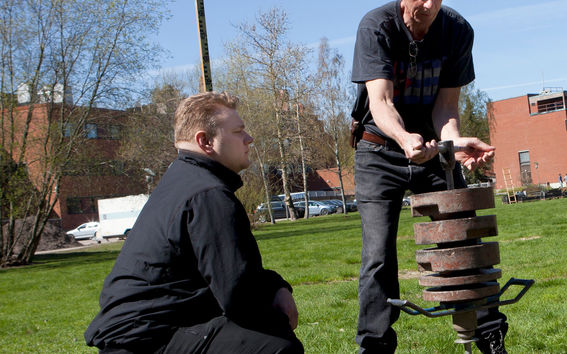
Henry Gustavsson shows Taneli Helminen (left) how to use a device for weight sounding.
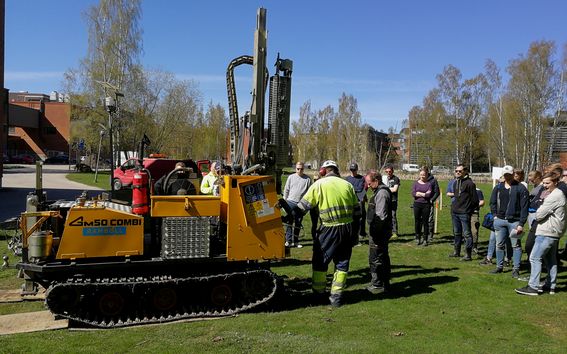
Read more news

Teamwork First-Aid Kit supports students in project-based courses
This online resource offers tools to support student teams throughout project courses.
Camilla Hollanti elected as a member of Finnish Academy of Science and Letters
Camilla Hollanti leads a prominent research group on applications of algebra and number theory. The central topic of her research is to apply the methods of algebra and number theory to problems encountered in telecommunications. Applications include wireless communication.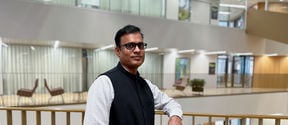
Summer School Teacher Interview: "Human-centered UX design places people at the forefront of technological advancements."
Learn how to design human-centered solutions in the Human-Centered UX Design course by Aalto University Summer School.